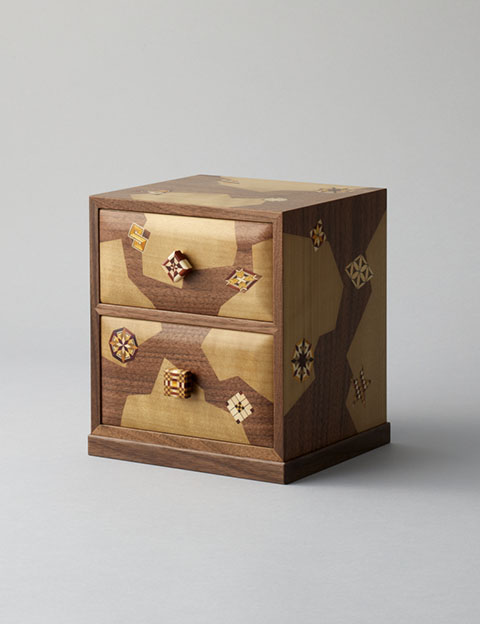HAKONE Yosegi Zaiku (Marquetry Wood Mosaics)

Hakone marquetry began at a post town in the mountains of Hakone around the middle of the 19th century. At first, the craft was unstructured and used simple patterns. In the 1870s, marquetry skills from Shizuoka were introduced, and today Hakone marquetry is known for its fine craftsmanship as a craft truly unique to Japan.
Few places in Japan have as many different species of trees as the mountains of Hakone. The rich variety of timber allows for a wide spectrum of natural colors to be used in geometric patterns for products including cabinets, boxes, coasters, trays and other household items.
Feature
The mountains around Hakone are famous in Japan for their diversity of trees. Hakone marquetry highlights the beautiful colors of Hakone’s natural beauty through many different geometric shapes and patterns. The mosaics are used for drawers, bureaus, boxes, teacup saucers and personal accessories.
How to make
First, multiple blocks of wood are cut into the same geometric shape. Each block is sliced to produce the individual mosaic pieces, which are assembled into the full mosaic pattern, creating a tanegi board. Expertise and experience are required to produce a tanegi board, as each block must be cut in exactly the same shape at precise angles and perfectly glued to produce the seamless mosaic pattern. A specialized plane is then used to shave paper-thin slices called tane-ita from the tanegi board, each with the same geometric pattern. These sheets are then glued to boxes and other joinery products as decoration. A recent technique allows boxes and turned wooden goods, including plates and bowls, to be made directly from tane-ita, further expanding the possibilities of Hakone wood mosaic work.

